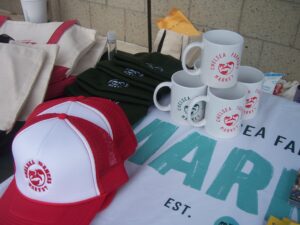(Chelsea Update would like to thank Jennifer Fairfield for the information in this column. Part 1 published yesterday.)
Indoors
If you haven’t planned your garden yet, don’t delay any longer. Waiting too long may mean you miss out on something you really want, because the early bird gardeners have already snapped it up. We have only had our seeds in for about two weeks, and they’re already flying out the door.
This year, along with seeds from Renee’s and Ann Arbor Seed Company, we will be carrying seeds from another local company – Nature and Nurture Seeds. And, the owners of both Ann Arbor Seed Company and Nature and Nurture will be guest speakers at some of our Green Thumb presentations. Both of these guys are lots of fun, so don’t miss their presentations.
Ladies and gentlemen, start your seeds. Parsley should be started now – it’s a bit slow to germinate, so needs a little extra time to be ready for planting outdoors. Broccoli, cabbage, kale, cauliflower, Brussels sprouts, and most other herbs should be started in mid-month, though basil can be started at the end of the month, or in early April.
Start tomatoes and peppers around the end of the month or the first part of April so that they will be mature enough to be planted outdoors by Memorial Day, which is always my target date for getting those in the garden. If you want to get yours in your garden sooner than that, start your seeds earlier, but realize that these warm-weather loving plants won’t do well if it’s too cold outside when they are planted out.
March is also a good time to get flowers started, if you are growing your own. I like to grow some of my own, simply because I can get varieties that I might not be able to find in nurseries, and it’s less expensive. Start Zinnias early in the month, and amaranth, catmint, cleome, Echinacea, gaillardia, nigella, stock, and thunbergia by mid- to late-March.
Begin fertilizing indoor plants that you were letting rest over the winter. Also, now is a great time to re-pot any of your indoor plants that need it – before you get so involved with everything that needs to be done outdoors that you can’t get to them. If some of your plants are getting really big, split them into a few smaller ones so that you don’t have one huge plant that you can’t move. If you don’t have room for all those little ones, give them away as gifts.
If you stored tender bulbs over the winter, check them now and discard any that are soft, damaged or diseased.
If you potted bulbs for forcing last fall, check their progress. When your bulbs get a few inches of growth, it’s time to move them into a cool (60 degrees) sunny spot, but not in direct sunlight. Once they have flowered, move them into a warmer spot, but keep them out of direct sunlight to help the blooms last longer. For even longer lasting blooms, provide cooler nighttime temperatures.
For the birds:
Continue feeding the birds this month. By now, any seeds left on plants from last year have long since been consumed, and it’s still too cold for much insect activity, so they are expending lots of energy searching for food sources.
Keeping your feeders full helps them save that energy for keeping warm during the cold days and nights that are still ahead. It also can help keep the birds around your yard as it warms up, when they will start eating the insects that emerge and start helping themselves to your plants.
Clean out nest boxes, or put up new ones – or both. Many birds will begin to scout out nesting sites this month, so cleaning out existing houses or putting up new ones now will encourage them to take up residence at your home. They’ll repay you for the hospitality by feeding their young with insects from your yard this spring.

















